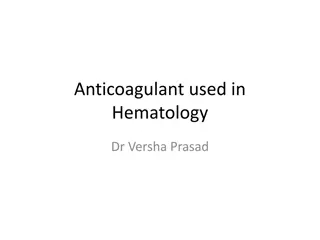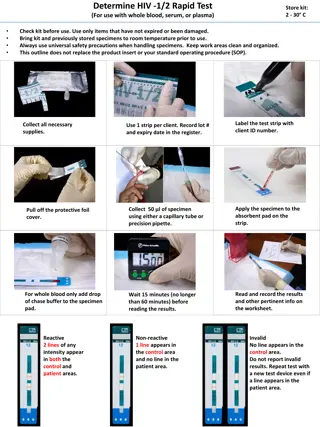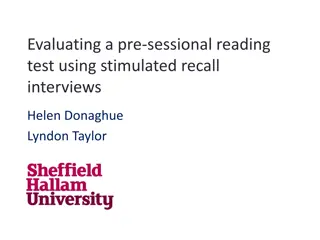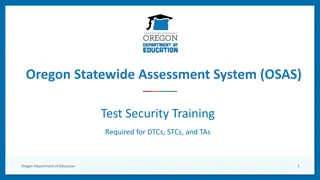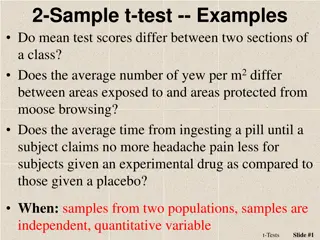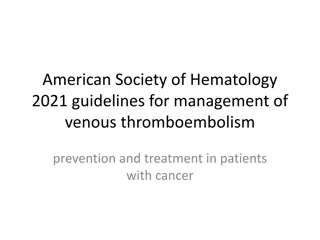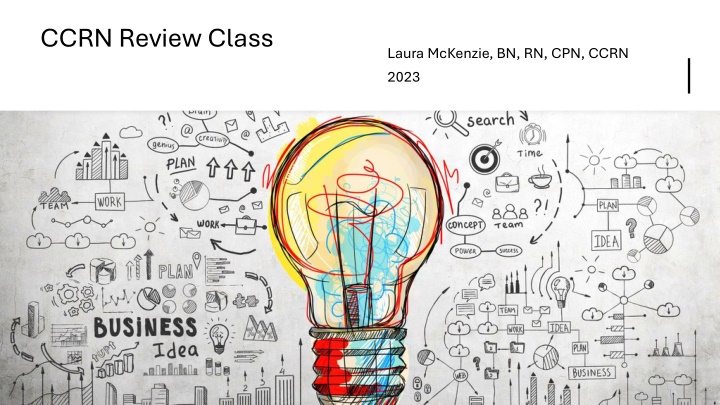
CCRN Review Class and Certification Renewal Guidelines 2023
Learn about AACN eligibility requirements, certification renewal, hematology nursing actions, blood component therapy, and more in this comprehensive guide for CCRN exam preparation and career advancement in nursing.
Download Presentation

Please find below an Image/Link to download the presentation.
The content on the website is provided AS IS for your information and personal use only. It may not be sold, licensed, or shared on other websites without obtaining consent from the author. If you encounter any issues during the download, it is possible that the publisher has removed the file from their server.
You are allowed to download the files provided on this website for personal or commercial use, subject to the condition that they are used lawfully. All files are the property of their respective owners.
The content on the website is provided AS IS for your information and personal use only. It may not be sold, licensed, or shared on other websites without obtaining consent from the author.
E N D
Presentation Transcript
CCRN Review Class Laura McKenzie, BN, RN, CPN, CCRN 2023
AACN Eligibility PRIDE/VALIDATION/EXCELLENCE/RECOGNITION/CAREER ADVANCEMENT/ROLE MODEL Licensure: current, unencumbered US RN or APRN Practice: 1750 hours in direct care in 2 years with 875 in most recent year or minimum of 2000 hours over past 5 years with 144 in most recent year Practice Verification: name and contact information of a professional associate must be given for verification of eligibility related to clinical practice hours
Certification Renewal Initial certification is granted for 3 years Requirements for renewal: 2. 432 hours of direct care within the 3- year period 3. Completion of CERPS (100 total )- Free in AACN Member OR Renewal by Exam 1. RN/APRN license
Synergy Model for Patient Care
Hematology Testable Nursing Actions: 1. Manage patients receiving transfusion of blood products 2. Monitor patients and follow protocols; pre, intra and post intervention (plasmapheresis, exchange transfusion, leukocyte depletion) 3. Monitor patients and follow protocols related to blood conservation
Blood Component Therapy Table Blood Component Indication Whole Blood Symptomatic deficit of oxygen-carrying capacity + hypovolemic shock, exchange therapy; massive hemorrhage PRBCs Symptomatic anemia; hypovolemia (blood loss) Platelets Thrombocytopenia, abnormal platelet function Fresh Frozen Plasma Deficit of coagulation factors; plasma volume expansion with all coagulation factors Granulocytes Adjunct to infection measures in high-risk patients and neonates Cryoprecipitate Hemophilia A; hypofibrinogenemia, Factor XIII deficiency, von Willebrand disease Albumin 5% or 25% Hypovolemia; hypoproteinemia
Bleeding disorder characterized by hemorrhage and thrombosis Disseminated Intravascular Coagulopathy (DIC) Exaggerated intravascular coagulation Fibrinogen converted to fibrin insetting of increased platelet aggregation Thrombosis
Causes Obstetric procedures Infection Shock Trauma Malignancies Vascular abnormalities Venomous snakebite Transfusion reaction Heatstroke
Clotting Rapid, widespread formation of thrombi Leads to ischemic injury Organ dysfunction Clotting & Bleeding Bleeding Clots are lysed-> consumption of clotting factors, fibrinogen, platelets Blood eventually loses ability to clot Clotting factors cannot be replaced by the body as quickly as they are being used
Prolonged PT and PTT Thrombocytopenia Systemic Inflammatory Response Decreased fibrinogen Increased D-dimer Decreased coagulation factors Increased fibrin degradation products Treatment: treat underlying cause; blood product products, heparin, clotting factors!
Idiopathic Thrombocytopenia (ITP) Isolated thrombocytopenia Antibodies to own platelets-> platelet destruction Usually precipitated by viral illness Management: Steroids, IVIG, immunosuppression, transfusion, monitor for complications
Heparin Induced Thrombocytopenia (HIT) Antibody mediated complication to heparin exposure that increases risk of thrombosis Initiates the formation of blood clots by abnormal platelet activation Management: Stop the immune response: STOP Heparin Inhibit thrombin production Treat and prevent new thrombosis
Question #1 All of the following are potential complications of blood component administration except: a. Acute hemolytic reaction b. Infection c. Anemia d. Coagulopathy
Rationale #1 C. Anemia Symptomatic anemia is an indication for blood component therapy and not a complication
Question #2 Twenty minutes after initiation of a PRBC transfusion, your patient becomes hypotensive, anxious and dyspneic and beigns to shake uncontrollably. You suspect that which of the following in occurring? A. Citrate toxicity B. Acute hemolytic transfusion reaction C. Acute nonhemolytic transfusion reaction D. anaphylaxis
Rationale #2 B. Acute hemolytic transfusion reaction These symptoms are consistent with an acute reaction or anaphylaxis; however the latter would be seen within minutes
Question # 3 Your first intervention to manage your patient s acute hemolytic reaction will be to: a. Notify the physician b. Treat shock and/or respiratory distress c. Stop the transfusion d. Keep vein open with an infusion of NS 0.9%
Rationale #3 C. Stop the transfusion You will need to make each intervention proposed, but the FIRST intervention must be to stop the transfusion if you suspect that your patient is having a acute reaction.
Question #4 Which of the following electrolyte disturbances would you monitor for in the patient who is receiving multiple, large volume blood tranfusions? a. Hypernatremia and hyperphosphatemia b. Hypocalcemia and hypophosphatemia c. Hyperkalemia and hyponatremia d. Hypocalcemia and hyperkalemia
Rationale #4 D. Hypocalcemia & hyperkalemia Patients who receive large volume blood tranfusions must be monitored for the development of hypocalcemia and hyperkalemia The hypocalcemia is the result of the calcium binding to the citrate used as a preservative in the blood; the hyperkalemia is associated with the breakdown of the cells in older blood.
Question #5 Amy, age 22 months was admitted to the PICU 2 weeks ago with RSV. She was nasally intubated ad mechanically ventilated, but her respiratory status has improved significantly, she was extubated 2 days ago. She has had minor bleeding from her nares, ut is otherwise doing well. The team is considering transferring her to the floor later today. You notice that the bleeding from Any s nares has increased, and she has two large bruises on her chest and petechiae on all extremities. You notify the critical care physician and send off the following labs: CBC, coagulants, and D-dimer. PT/PTT and D-dimer are normal; but she has decreased platelet count. What do you suspect that Amy may have developed? a. Disseminated intravascular coagulopathy b. Thrombotic thrombocytopenic purpura c. Idiopathic thrombocytopenic purpura d. Hemolytic uremic syndrome
Rationale #5 c. ITP Immune-mediated decrease in platelet count. It often occurs following a viral infection. Diagnostic studies will reveal a low platelet count but normal PT/PTT and D-dimer.
Reference American Association of Critical Care Nurses. (2015). Pediatric CCRN Certification Review Course: Hematology, in AACN Certification Review.









